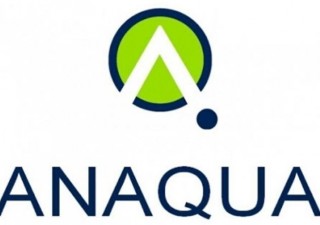10 Things Every CEO Should Know About IP
21 September 2018

Questions and answers with Jack Morgan, chief information officer, and Eric Reeves, chief technology officer, at Anaqua.
Asia IP: What are the IP prosecution traps that can needlessly waste financial resources?

Jack Morgan: There are many organizations that waste valuable financial resources during the prosecution phase of patenting that could be avoided with a more disciplined and balanced process. From the start of the innovation lifecycle, the easiest way to avoid wasted prosecution costs is to avoid prosecution of poor investments. World class IP organizations have a well-defined process with the right business expertise incorporated into the vetting and decision-making steps for filing decision. This same tight process carries through the prosecution lifecycle. As key lifecycle points during prosecution arise, a business-driven process for deciding the value potential of each asset in production or later stages enables prudent decisions which dramatically reduces cost during prosecution. Putting the investment spend in the right assets makes all the difference.
AIP: Do companies do IP inventory in order to know and find out what to protect?
JM: A sign of an immature IP operation can often be reflected through IP leaders exclaiming “We have no idea what assets we have out there.” This is not uncommon in a fast-growing organization where IP has been an afterthought and loosely coupled business units work independently with outside counsel or not at all! When management realizes the magnitude of the value, tackling the problem of building an accurate inventory requires a combination of:
• Relationship building to find out where the IP is (current and potential);
• Education to help the R&D units realize how IP fits into the business;
• Some good old-fashioned scavenger hunting to uncover what is inside products but yet to be harvested as filed IP; and
• Finding what is out there across the business units and acquisitions under different corporate entity names and hidden in the archives of legacy outside counsel.
AIP: How do companies protect the systems that store their IP such as trade secrets?
JM: During the past 20 years, as IP has taken its place in the board meetings and on the balance sheet, the need to protect it from leaking out to other competitors and other countries has become increasingly important. Sophisticated IP leaders realize that information security is more than the login and password to their IP database. In an era of unprecedented cybercrime, companies have matured and realize that every level of the system must meet best-in-class security practices. This has led them to look to cloud security solutions despite the sensitivity of the material in question. Companies have come to realize that the best IP cloud solutions are dedicated to offering the most sophisticated security tactics and tools. Unlike their internal IT which must serve many masters, specialized providers are all-in with protections at all levels, encrypting file systems, encrypting databases, using advanced tools for monitoring access and applying AI to identify anomalies. These cloud solutions also integrate with their corporate authentication systems so they can control provisioning and deprovisioning of users while leaving the rest to their chosen IP management partners.
AIP: Are we investing enough in R&D and IP development to compete now and into the future?
Erik Reeves: Firms should be investing sufficiently in R&D to grow by developing new products and maximizing ROI on those investments through IP protection. With the pace of innovation increasing every day, senior executives and boards need to be mindful of potential risks, including catastrophic disruption; as well as emergent opportunities.
AIP: Do we understand the value of our IP and how it drives our profit and loss statement?
ER: The management of your IP should be seen as an ongoing discipline that is aligned with, and an integral part of, your business planning and strategy. The closer it is tied to key financial statements and other standard metrics, the better the alignment is likely to be.
AIP: Do we have a strong IP strategy to compete globally and can we articulate this to our shareholders and the market-at-large to realize increased value?
ER: Having an organized IP strategy in place will ensure that there is a streamlined process on identifying, protecting, and managing your IP. Equally importantly is unlocking the latent value for shareholders.
AIP: Given that these critical assets are not captured in balance sheet, are investors expected to factor them into stock price or assume they are already accounted for in the P&L?
ER: Because intellectual assets represent such a significant portion of a company’s worth it is important that a company communicate the importance and value of IP to analysts, shareholders and potential investors. If innovation and IP excellence are not baked into valuation, senior leaders are failing their shareholders.
AIP: Are we prepared to handle the increasingly complex world of IP risk and opportunity and react (and communicate our plan) quickly to changes?
ER: IP tools and technology evolve constantly and require re-visiting your IP plan and priorities every year. There needs to be a proactive plan in place to monitor and stay on top of a company’s product and IP ecosystem real-time.
AIP: How do we value IP when looking at our own acquisition strategy?
ER: Having a systemic approach and methodology to align IP value and business strategy extends to how a company directs their acquisition strategy.
AIP: Does our product roadmap include an IP roadmap and implications for financial projections? ER: Just as a product roadmap and pipeline is the lifeblood of any company, the IP “roadmap” associated with these products needs to drive competitive advantage. A bad product won’t sell, but a great product will – and the sustainability and profitability will be driven by the product advantages, including IP protection.






